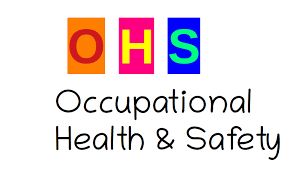According to the International Labour Organization (ILO) some 2.3 million women and men around the world succumb to work-related accidents or diseases every year; this corresponds to over 6000 deaths every single day. Worldwide, there are around 340 million occupational accidents and 160 million victims of work-related illnesses annually.
Summary of Definitions of Occupational Health And Safety
Several definitions of occupational health and safety and occupational health services have been produced by professional bodies, international organizations such as WHO and IL0 and national bodies and authorities. If one summarizes those definitions, occupational health is considered to be multidisciplinary activity aiming at:
- protection and promotion of the health of workers by preventing and controlling occupational diseases and accidents and by eliminating occupational factors and conditions hazardous to health and safety at work
- development and promotion of healthy and safe work, work environments and work organizations.
- enhancement of physical, mental and social well-being of workers and support for the development and maintenance of their working capacity, as well as professional and social development at work
- enablement of workers to conduct socially and economically productive lives and to contribute positively to sustainable development.
Thus occupational health has gradually developed from a monodisciplinary risk-oriented activity to a multidisciplinary and comprehensive approach that considers individual’s physical, mental and social well-being, general health and personal development. The most successful economies have demonstrated that workplaces designed according to good principles of occupational health, safety and ergonomics are also the most sustainable and productive. Furthermore, wide experience from countries show that a healthy economy, high quality of products or services and long-term productivity are difficult to achieve in poor working conditions with workers who are exposed to health and safety hazards.
The available scientific knowledge and practical experiences of enterprises and countries which have achieved the best results in the development of occupational health indicate the value of several principles. These principles are common denominators in occupational set-tings that have shown the best results in health, safety, social relations and economic success. Enterprises with such occupational settings are also the most stable in times of crisis.
The following principles are found in international instruments on occupational health and safety and in the legislation of the countries with the strongest occupational health and safety traditions: avoidance of hazards (primary prevention) and use of safe technology; government responsibility; authority and competence to regulate and control working conditions; optimization of working conditions; integration of production and health and safety activities; primary responsibility of the employer or entrepreneur for health and safety at the workplace; recognition of employees’ own interest in health at work; cooperation and collaboration on an equal basis: participation, right to know and transparency; continuous follow-up and development of working conditions.
The key strategy principles of international and national occupational health and safety policies are:
- avoidance of hazards (primary prevention)
- safe technology
- optimization of working conditions
- integration of production and health and safety activities
- government’s responsibility, authority and competence in the development and control of working conditions
- primary responsibility of the employer and entrepreneur for health and safety at the workplace
- recognition of employees’ own interest in occupational health and safety
- cooperation and collaboration on an equal basis by employers and workers
- right to participate in decisions concerning one’s own work
- right to know and principle of transparency
- continuous follow-up and development of occupational health and safety.
Implementation of such principles requires appropriate legal provisions, administrative enforcement and service systems for occupational safety and health and occupational health services.
For occupational health services, the following functional principles are recognized; prevention and promotion; adaptation and adjustment of working conditions to the worker; rehabilitation; curative services and acute response (first aid and emergency response).
By implementing such principles, occupational health serves as a catalyst for change at the workplace towards the development of better management of production and better control of hazards at work.
Occupational health problems are not only problems for the worker, but above all, they are problems of work and the work environment. The work environment varies greatly according to type of economic activity, occupation, company and size of workplace. Geographic and climatic conditions also have a great impact on the work environment, particularly in outdoor activities such as fishing, forestry and agriculture. However, due to differences between the work environments in different countries with otherwise similar socio-economic and climatic conditions and between different companies with similar types of production, it has been concluded that a major part (varying according to the activity and the method of estimate) of occupational health hazards are in principle prevent-able. Thus, there is much room for prevention in virtually all countries and particularly in countries with lower standards of occupational health and safety.
Many industrialized countries with the strongest traditions in occupational health and safety can show constantly declining trends of occupational accidents and traditional occupational diseases as an impact of adopting the above principles.
Some national and international industries have adopted a strategy setting zero risk as an objective in the work environment. Though not totally achievable, such a strategy has stimulated programmes and actions for planning and designing the work environment and working practices according to the best available technology and principles and carrying out production according to good practices, operation and maintenance. This has led to substantial reduction of hazardous exposures at work, elimination or decrease in occupational injuries and diseases, and saving of costs by reduction of disturbed production and costs of sickness. Such experiences demonstrate that a safe and healthy work environment can be planned, constructed, organized and maintained if the best occupational health and safety standards are applied. They also demonstrate that a healthy and safe work environment is a realistic and achievable objective, a positive investment rather than a burden for economy.
Occupational health problems are not only problems of individual workers’ health, but they are also problems relating to the healthiness and safety of work and the work environment, the organization of work and the management philosophy of the enterprise and workplace.
The way that work is organized, the management style, and the extent to which the worker can determine or regulate his or her work and participate in decisions about it have been shown in several studies to make a positive impact on health, prevent overload at work, counteract stress and promote work motivation and productivity. In the midst of rapid change, the need to learn new jobs and new skills requires an environment which is conducive to learning and adaptation. Effective management of such changes re-quires further development of the principles of right to know, transparency, openness and participation.
A number of studies have shown that organizing work in this way tends to be supportive of health and well-being, provides social contacts and gives opportunity for the development of personal abilities and skills. Such an approach also aims at adjustment of the workload and other work requirements to match the personal needs and capacities of the individual worker. This latter objective is particularly important for enabling older individuals, handicapped persons, chronically ill individuals, pregnant workers and others with special needs or vulnerability to participate in work. Meeting such multiple criteria for a “good workplace” also meets the best occupational health standards. There is also recent evidence on better management of crises caused by economic difficulties of the companies, uncertainty of jobs, and threat of unemployment in organizations which have adopted new participatory and collaborative principles as a part of organization’s management culture.
Successful prevention requires:
(a) Information on the causal relationship the between risk factor and health outcome.
(b) Knowledge of the mechanism of action of hazardous factors and conditions.
(c) Knowledge of how the causal relationship can be broken.
(d) Resources, tools and mechanisms for the implementation of preventive measures, and
(e) Political, managerial and target group support for the preventive programme.
Many of these conditions are met in the modem occupational health approach and realistic opportunities for effective prevention do prevail provided point (e) can be assured.
Obtaining such support requires effective information and education of several actors and decision-makers and implies a need to raise awareness on the importance of occupational health. Knowledge of mechanisms of action and of the causal relationship between exposure and outcome call for extensive research efforts. One of the leading principles in the industrialized countries and international organizations, including WHO, is that all policy and practical actions should be founded on a “sound scientific basis.
Successful prevention requires scientific knowledge of the sources, mechanisms of generation, transmission and magnitude of problems together with technical knowledge and practical skills for the prevention and control. Thus multidisciplinary expert competence and practical technical competence should collaborate.
What are the main objectives of occupational health and safety?
The goal of an occupational safety and health program is to foster a safe and healthy work environment. OSH may also protect co-workers, family members, employers, customers, and many others who might be affected by the workplace environment.
Empowerment of the community
In well-organized industrial settings, local activities in occupational health are initiated at plant level by managers, foremen or workers’ representatives. In many countries, such activities are institutionalized in occupational health and safety committees. Various service systems, such as in-plant occupational health services, external occupational health units or primary health care units, may provide expert services and advice in the development of occupational health and safety. This corresponds to the community approach in public health.
In the case of small and medium-sized enterprises, the self-employed and the agricultural sector, organized service systems are rare and other approaches should be adopted. The community-based approach may be relevant by providing training, information and expert advisory support to the local actors in the community.
The awareness of politicians, the authorities, employers, workers and the general public of occupational health and safety issues should be increased by using various ways to disseminate information. This creates a basis for strengthening political will to create the prerequisites for improvement of working conditions, and thereby workers’ health. A system of participation and positive incentives would further ensure the development of health at work in all societies.
Objectives and actions
Goals and objectives of occupational health are based on the WHO definition of health as a “state of physical, mental and social well-being” that provides the individual with an opportunity to conduct a “socially and economically productive life”. Both the WHO Health-for-All strategy and the IL0 Conventions on Occupational Safety and Health (No. 155) and on Occupational Health Services (No. 161) start from the principle that occupational health and safety services should be available and are the right of each individual taking part in work, irrespective of the sector of the economy, size of the company or type of assignment. This objective covers also the self-employed, agriculture, home industries and other workplaces in the so-called informal sector, as well as workers in cooperatives and the public sector. It aims, therefore, at occupational health for all working persons everywhere.
Not only the health problems directly related to work, but also the so-called work-related diseases, problems of general health and working capacity, and the potentially positive impact of occupational health on environmental health should be considered in setting objectives for occupational health.
To identify occupational health hazards, to provide appropriate advice on their control and prevention, to contribute to the development of healthy and safe workplaces and to follow up and take the necessary actions for the health of workers, a comprehensive and competent occupational health service is necessary. Such a service should be available at each workplace and accessible by each worker. For this purpose, many industrialized countries have developed a special, often legislation-based system for occupational health services (OHS). Comprehensive OHS are understood as front-line services, active at the workplace, containing preventive, curative and promotional elements and using, where appropriate, the primary health care approach. OHS constitute the health component of comprehensive occupational safety and health programmes aiming at progressive development of working conditions. In their most advanced forms, comprehensive OHS focus on workers and working populations, to the work environment and its hazardous factors, exposures and structures, and work organization. Such OHS contain preventive, control, curative, treatment, rehabilitation and promotion activities for the improvement of working conditions, protection of health and for the maintenance and promotion of working capacity.
According to the WHO Health for All principles and ILO Conventions on Occupational Safety and Health (No. 155) and on Occupational Health Services (No. 161), every worker has the right of access to occupational health and safety services, irrespective of the sector of the economy, size of the company, or type of assignment and occupation.
In line with the new strategies of the United Nations organizations, particularly WHO, and strategies adopted in many of the Member States, and in view of the constraints on financial and human resources, a global strategy on occupational health for all should be implemented as far as possible in collaboration with other relevant bodies, programmes and actors. Strategic alliances, networking, division of labour and collaboration with other units of WHO, particularly PCS/IPCS and with other organizations, particularly ILO, are of utmost importance.
The following 10 objectives requiring special action are proposed as a basis for the Global Strategy on Occupational Health for All. Some of the objectives have been included in previous WHO Programmes and particularly in the VIII General Programme of Work, but either the activity is still very relevant or previous objectives have so far not been met.
It is the objective in this Strategy that, by the year 2000, the countries where trends in occupational health and safety are already positive should demonstrate a further improvement of occupational health and safety indicators, showing a reduction of the difference between levels of health and safety of low-risk and high-risk occupations and enterprises. In countries where the present trends are negative, positive development is expected, and the legal and other actions, including the development of necessary resources and infrastructures, should be taken to make such positive trend possible. All countries should show a progressive development of occupational health services with the ultimate objective of covering all workers with such services irrespective of the sector of the economy, size of company, occupation, mode of employment, or nature of self-employment.
The development of occupational health and safety calls for full utilization of all the expertise and knowledge found in WHO. In planning new projects in occupational health, collaboration with and participation of other units within WHO is encouraged. Also vital is clearly-defined leadership in global occupational health. This should be demonstrated by giving a high priority to occupational health and by elevating the status of OCH within the Organization and within its regular budget.
As the resources for activities are scarce in every country, effective net-working of the existing educational, research and information resources, progranunes and institutions should be fully utilized. Such networking should aim to avoid duplication of work and waste of human and financial resources, to increase motivation and to improve quick and immediate transfer of knowledge. The Network of WHO Collaborating Centres in Occupational Health offers a good model and forum for development of this collaboration.
Many ethical problems are encountered in the practice of occupational health and in occupational health research. These should be tackled by tri-partite review of the study protocols, avoidance of perceived compromises in results, and by following faithfully generally-accepted ethical guide-lines and scientific methods in all work practices. The ethical code of ICOH for occupational health personnel is a valuable guideline which should be effectively distributed to all concerned. SEE: History of Occupational Health and Safety





